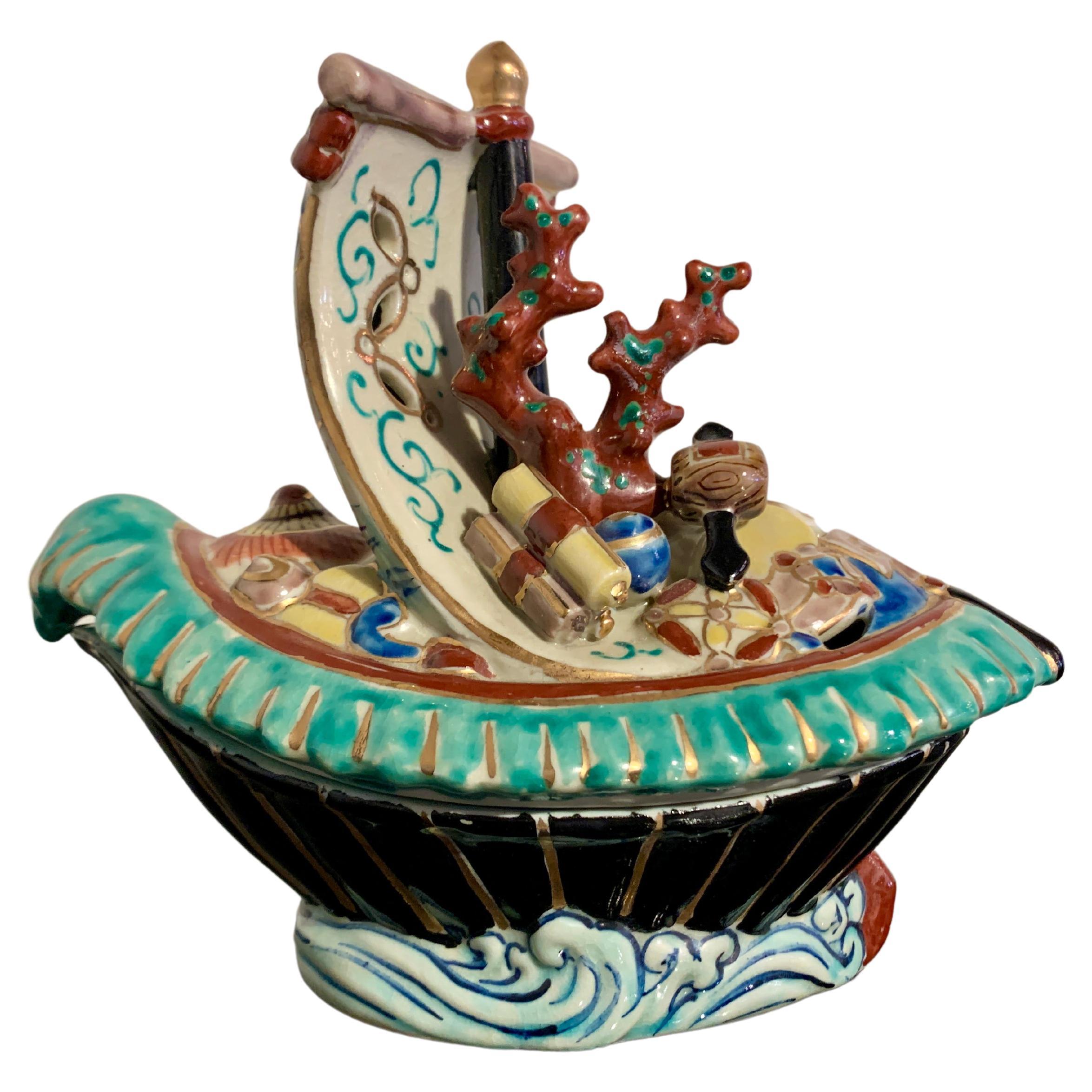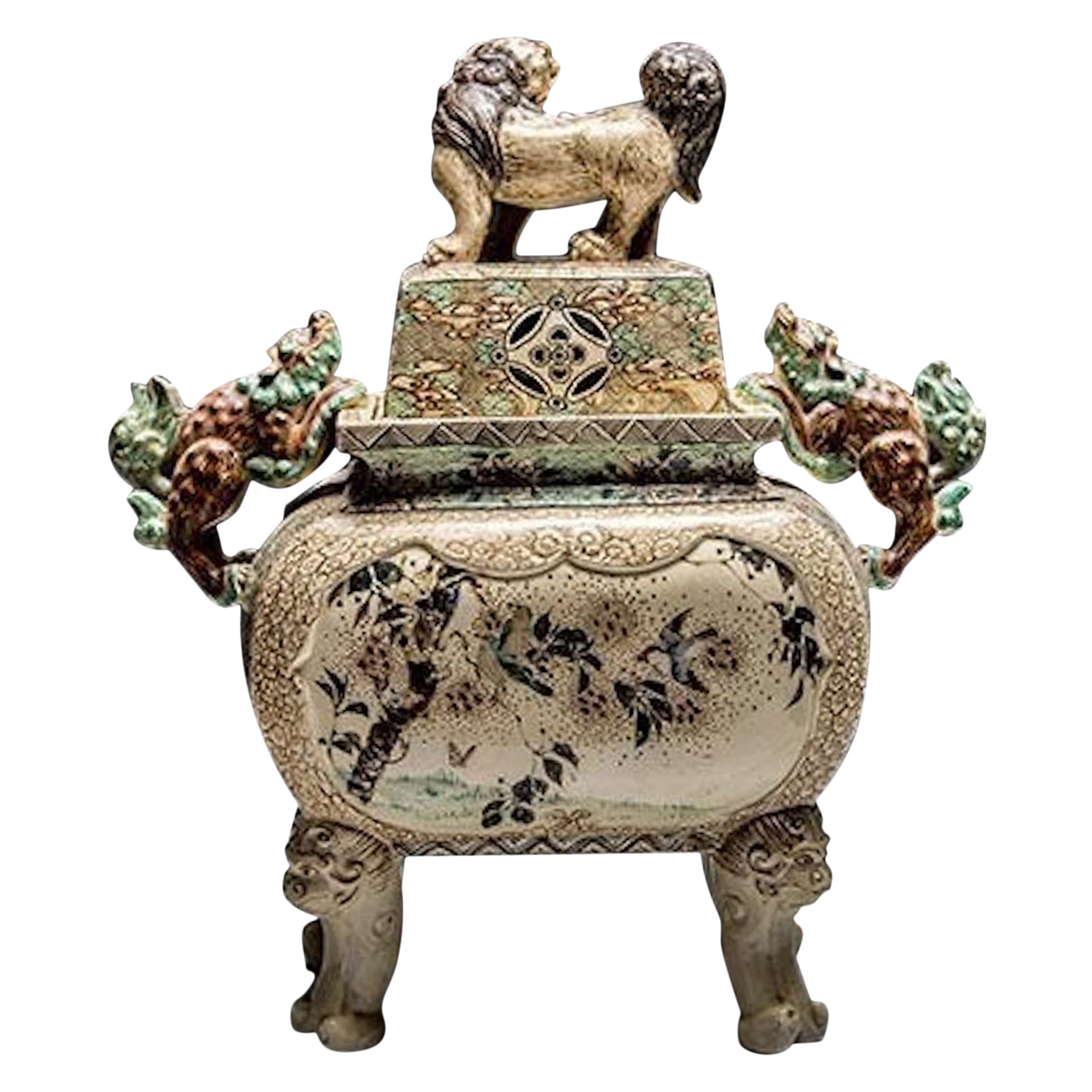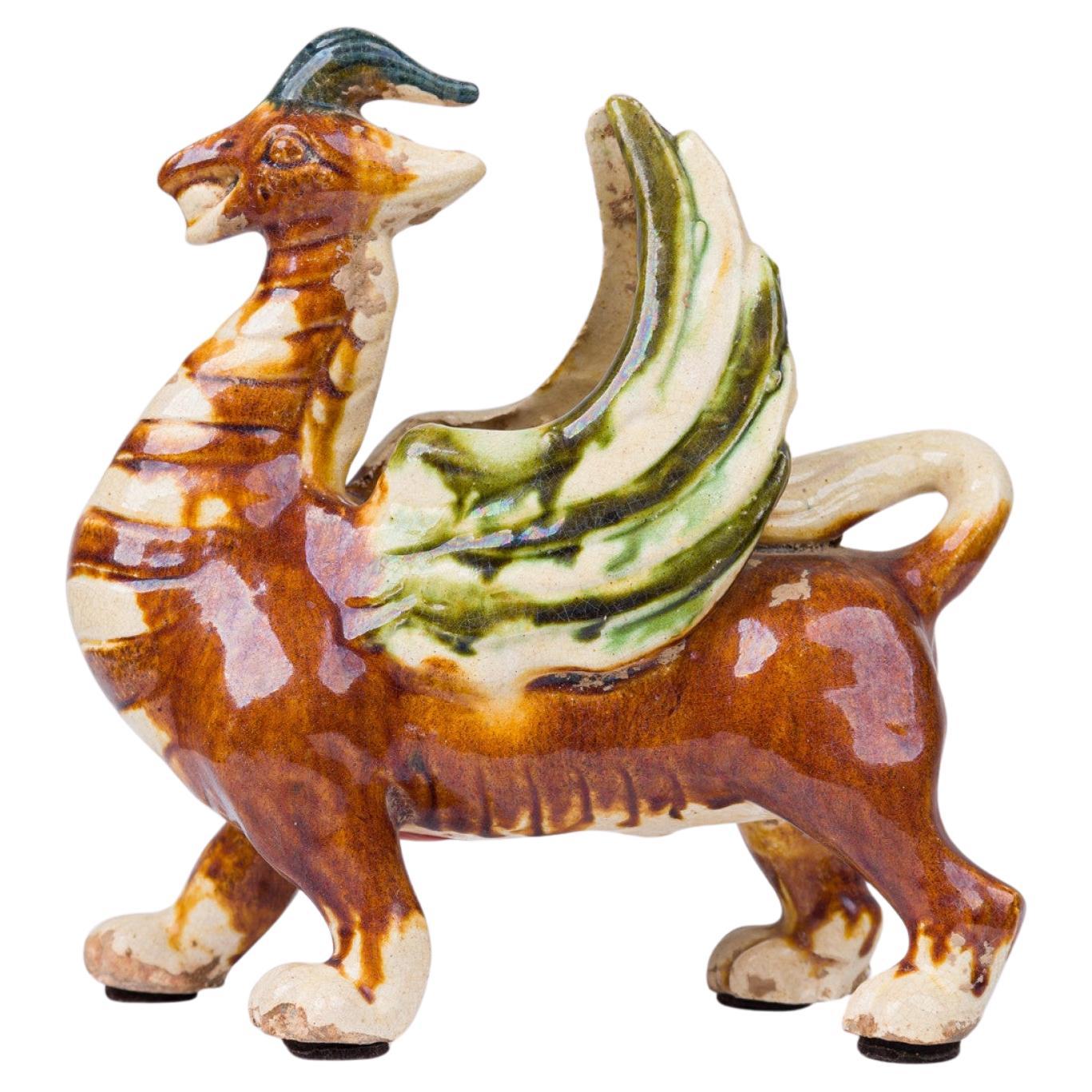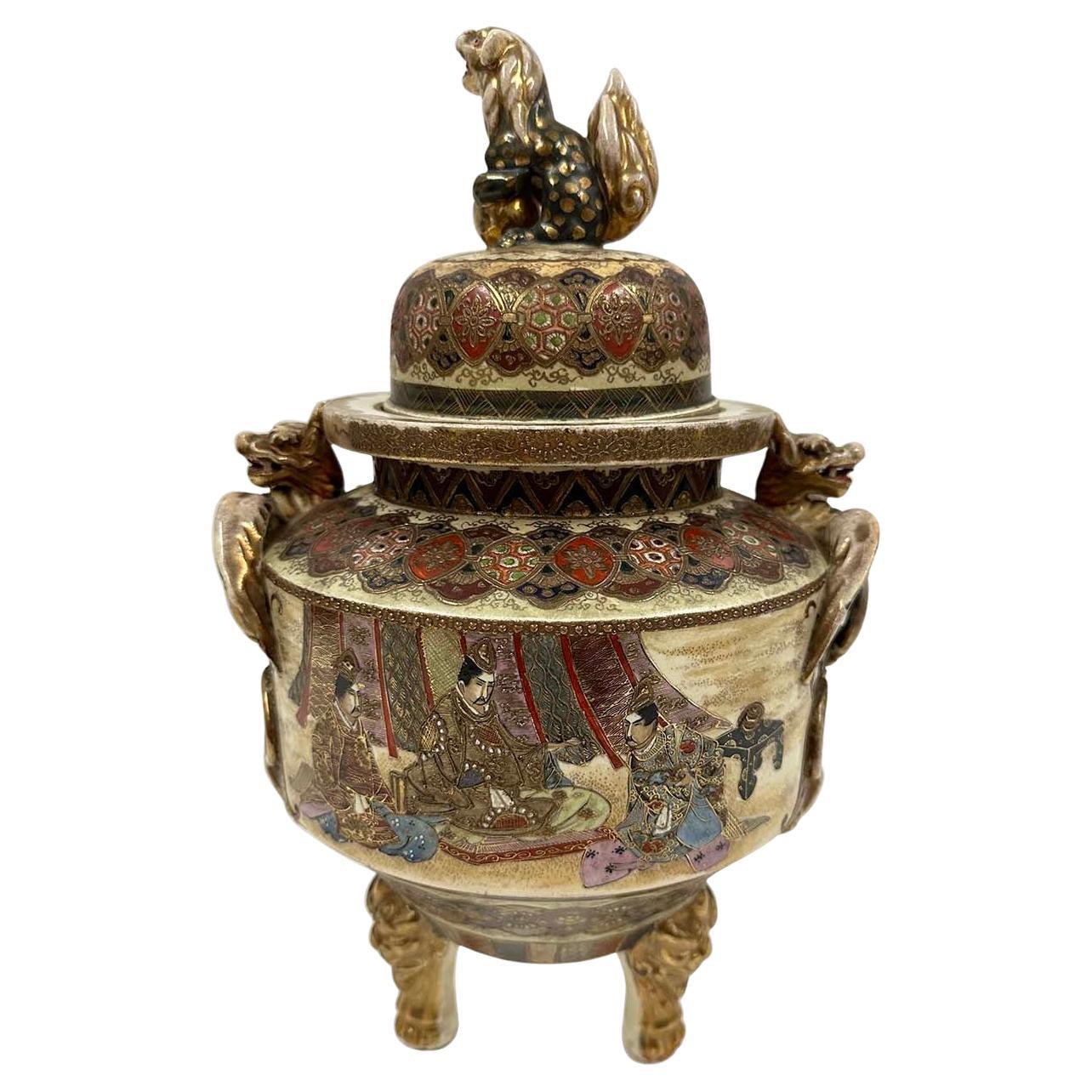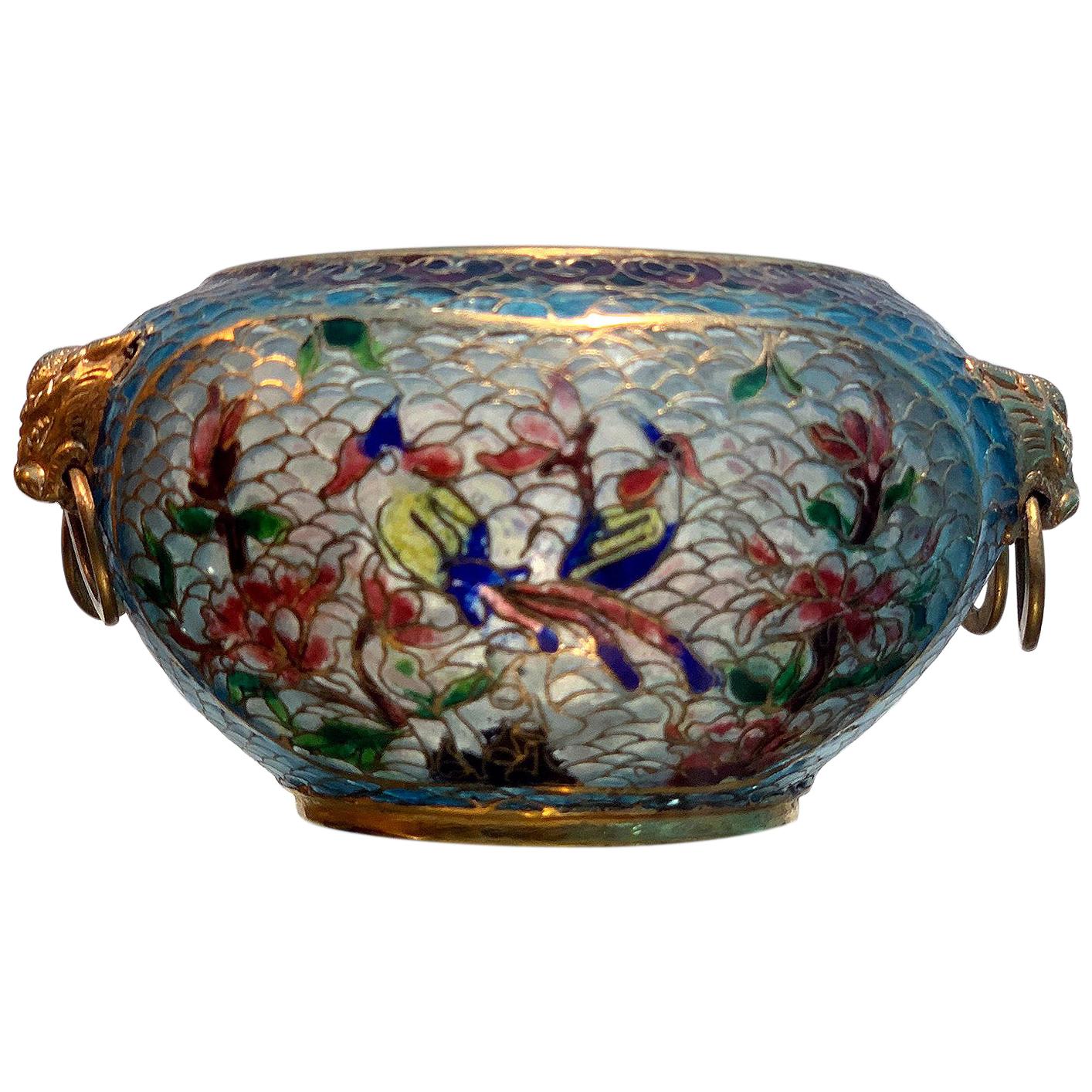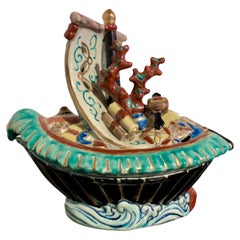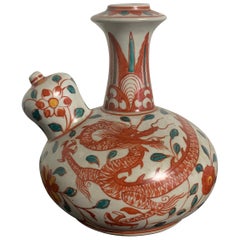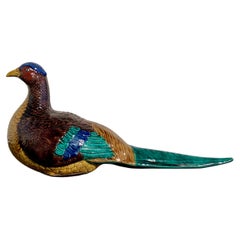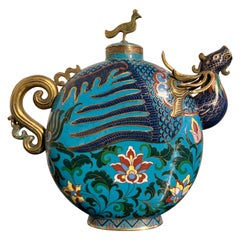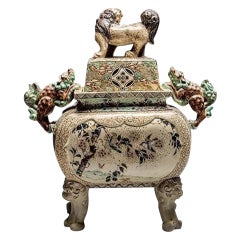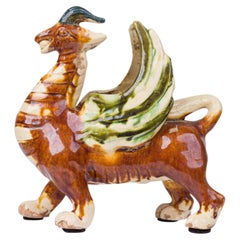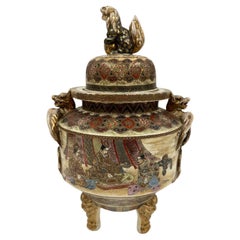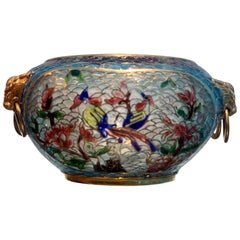Items Similar to Japanese Aote Kutani Phoenix Censer, Koro, Showa Era, Japan
Want more images or videos?
Request additional images or videos from the seller
1 of 15
Japanese Aote Kutani Phoenix Censer, Koro, Showa Era, Japan
$1,350
£1,032.15
€1,188.82
CA$1,891.76
A$2,111.98
CHF 1,106.64
MX$25,852.67
NOK 14,054.39
SEK 13,251.50
DKK 8,872.32
About the Item
A fantastic Japanese Aote type Kutani incense burner, koro, in the form a phoenix, Showa era, circa 1930's, Japan.
The censer, koro, gracefully modeled as a phoenix in flight, and glazed in bold and bright green, yellow, aubergine and blue colors, in what is known as the Aote style.
The phoenix portrayed with her wings dramatically outstretched, long, elegant neck stretched upwards, her head turned, beak slightly open, with an intense gaze. The long tail curled over itself in a graceful fashion, also serving as a handle.
The phoenix's back, pierced with two openings, serves as the cover of the censer, and is surmounted by a yellow glazed cloud-form finial.
The koro magnificently glazed in near majolica colors. The body and underside of the wings glazed a yellow, the wings, neck and head in aubergine, the tail, back, and front of the wings glazed green. Blue glaze outlines the wings and back, and is used for the comb and wattle.
The bottom unglazed, with an impressed "Kutani" mark.
- Dimensions:Height: 4.25 in (10.8 cm)Width: 5.25 in (13.34 cm)Depth: 5 in (12.7 cm)
- Style:Showa (Of the Period)
- Materials and Techniques:Porcelain,Glazed
- Place of Origin:
- Period:
- Date of Manufacture:circa 1930s
- Condition:Wear consistent with age and use. No chips, cracks, or repairs noted.
- Seller Location:Austin, TX
- Reference Number:1stDibs: LU894727727012
About the Seller
5.0
Platinum Seller
Premium sellers with a 4.7+ rating and 24-hour response times
Established in 2001
1stDibs seller since 2010
345 sales on 1stDibs
Typical response time: <1 hour
- ShippingRetrieving quote...Shipping from: Austin, TX
- Return Policy
Authenticity Guarantee
In the unlikely event there’s an issue with an item’s authenticity, contact us within 1 year for a full refund. DetailsMoney-Back Guarantee
If your item is not as described, is damaged in transit, or does not arrive, contact us within 7 days for a full refund. Details24-Hour Cancellation
You have a 24-hour grace period in which to reconsider your purchase, with no questions asked.Vetted Professional Sellers
Our world-class sellers must adhere to strict standards for service and quality, maintaining the integrity of our listings.Price-Match Guarantee
If you find that a seller listed the same item for a lower price elsewhere, we’ll match it.Trusted Global Delivery
Our best-in-class carrier network provides specialized shipping options worldwide, including custom delivery.More From This Seller
View AllJapanese Kutani Treasure Boat 'Takarabune' Censer, Taisho Period, Japan
Located in Austin, TX
A wonderful Japanese Kutani porcelain incense burner, koro, in the form of a treasure ship, Takarabune, Taisho Period (1912 - 1926), Japan.
The censer boldly modeled as the legendary Takarabune, or Treasure Ship, a mythical ship said to carry the shichifukujin, the Seven Lucky Gods, around the heavens during the first days of the New Year, visiting lucky humans to bring blessings and prosperity.
The black bodied, single mast ship sails on the water, its sail full of wind and decorated with the character "takara", meaning treasure. The pierced top of the ship serving as the cover for the censer. It is loaded with magical items and treasure, most prominently, a large coral branch...
Category
Vintage 1910s Ceramics
Materials
Porcelain
Chinese Export Kendi, Swatow Ware, Porcelain with Polychrome Enamels, circa 1900
Located in Austin, TX
A delightful Swatow ware Chinese export shipwreck porcelain kendi featuring a writing dragon and an apocryphal Tongzhi mark, late 19th or early 20th centur...
Category
Antique Early 1900s Chinese Qing Ceramics
Materials
Porcelain
Japanese Kutani Pheasant Sculpture, Okimono, Showa Era, Early 20th Century
Located in Austin, TX
A spectacularly glazed Japanese Kutani model, okimono, of a pheasant, Showa era, early 20th century, Japan.
The okimono, or decorative sculpture, in the form of a magnificent phea...
Category
Vintage 1930s Japanese Showa Ceramics
Materials
Porcelain
Chinese Cloisonne Phoenix Head Tea or Wine Pot, Mid 20th Century, China
Located in Austin, TX
A delightful and unusual Chinese cloisonne enamel copper wine or tea pot in the form of a phoenix, late Republic Period, or post Republic, mid 20th century, China.
The wine pot in t...
Category
Mid-20th Century Qing Metalwork
Materials
Copper, Enamel
Miyanaga Tozan III Seihakuji Glazed Tokkuri, Showa Era, Japan
Located in Austin, TX
A sublime and elegant seihakuji (qingbai or celadon) glazed porcelain tokkuri (sake bottle) by Miyanaga Tozan III, also known as Miyanaga Rikichi, (b. 1935), Showa Period, circa 1980...
Category
Vintage 1980s Japanese Showa Ceramics
Materials
Porcelain
Japanese Satsuma Incense Burner, Koro, Meiji Period, Late 19th Century, Japan
Located in Austin, TX
A fine and elegant Japanese Satsuma tripod incense burner, koro, with pierced metal lid, signed Eizan (?) Meiji Period, late 19th century, Japan.
The koro, or censer, features a stoneware body of slightly compressed globular form, supported on three short and squat legs. The wide mouth with a recessed metal rim, and topped by an openwork metal lid topped with overlapping chrysanthemum blossoms of silver repousse.
The body of the koro finely painted with fan shaped cartouches. The fans in the foreground with sprays of blossoming chrysanthemum. The fans in the background with intricate geometric brocade designs.
The shoulder of the incense burner decorated with cartouches formed as stylized chrysanthemum petals, and intricately decorated with geometric and floral brocade designs.
The painting finely done in raised gilt and polychrome enamels, including the highly desirable gosu blue...
Category
Antique Late 19th Century Japanese Meiji Ceramics
Materials
Silver, Metal
You May Also Like
Japanese Satsuma Style Censer and Cover, Late 19th Century
Located in West Palm Beach, FL
Japanese Satsuma style censer and cover
Late 19th century
The bulbous body supported by four feet and set with two shishi han...
Category
Antique Late 19th Century Ceramics
Materials
Ceramic
Chinese Sancai Glazed Ceramic Yinglong Winged Dragon Figurine
Located in Queens, NY
Chinese Sancai glazed ceramic figurine depicting Yinglong, the dragon deity standing on all fours, a sphere clenched in its mouth.
Chipping along the bottom paws, some glaze loss...
Category
20th Century Chinese Sculptures and Carvings
Materials
Ceramic
Antique Japanese Meiji Period Satsuma Incense Burner Censer
Located in Pomona, CA
UP for you consideration is a beautiful antique Meiji period Japanese gold gilt satsuma incense burner marked/signed by Kinkozan. Very fine hand...
Category
Early 20th Century Japanese Chinese Export Urns
Materials
Porcelain
Chinese Plique-a-jour Archaic Style Bowl
Located in Atlanta, GA
A small Chinese cloisonné enamel bowl made with the technique of Plique-a-jour (means "letting in daylight" in French), a challenging method similar to small scale stained windows or...
Category
20th Century Chinese Chinese Export Metalwork
Materials
Copper, Enamel
A Rare Large Wucai Dragons and Phoenix Jar, Ming dynasty Longqing Emperor
Located in seoul, KR
The blue dragon and the red dragon are depicted in dynamic postures, each extending its claws to grasp a ruyi pearl (如意珠). The phoenix is adorned with flowing feathers and delicate c...
Category
Antique 16th Century Hong Kong Ming Antiquities
Materials
Ceramic
$10,500 Sale Price
30% Off
Japanese insense burner. 19th c.
Located in Stockholm, SE
This 19th-century Japanese bronze incense burner is finely cast in the shape of a duck with an elegantly arched neck and open beak, a symbol of longevity and peace in Japanese cultur...
Category
Antique 19th Century Japanese Metalwork
Materials
Bronze
More Ways To Browse
Japanese Head
Japanese Showa
Used Furniture In Phoenix
1930s Japan
1930s Japanese
Japanese Green Ceramics
Blue Glaze Japan
Japanese Phoenix
Japanese Kutani Porcelain
Phoenix Vintage Furniture
Porcelain Phoenix
Styled By Phoenix
Showa Japanese Porcelain
Censer Incense
Blue Phoenix Japan
Vintage Japanese Kutani
Japanese Koro
Japanese Censer
